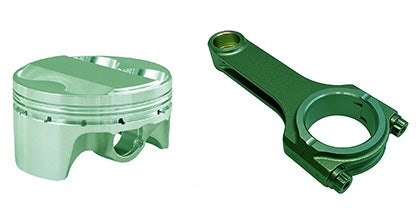Single Disc Clutches vs Multi Plate Clutches - Jays Tech Tip
In this video Jay goes over the operation and limitations of both Single disc clutches and Multi plate clutches, and talk about what you need to know to make an educated purchase.
The basic operation of a clutch is relatively simple. You have a flywheel that is bolted to the back of the crankshaft, A pressure plate that is bolted to the flywheel, and a disc that’s riding on the input shaft of the transmission .
As you engage and release the clutch pedal on the car, the pressure plate opens and closes sandwiching the disc between the flywheel and the pressure. Causing the torque from the engine to be transmit into the transmission




When the factory designed your OEM clutch they needed to be able to manage the power output of the engine. Offer good drivability good longevity but still be that fuse, that weak link in the driveline that if the owner was being abusive to the vehicle the clutch would fail first.
One of the things you will notice when shopping for an aftermarket clutch is the manufacture will assign a torque value to different clutches. So they say, This clutch will hold 425ft lbs of torque. Or this one over here it will hold up to 40% more torque than stock. You need to understand these values aren’t found through some scientific typic method. They’re found by feedback and experience that they’ve gained over the years.
Common pressure plate claming force range:
Standard OEM: 1600-2000lbs
Aftermarket: 2200-3000 lbs


One of the biggest problems assigning the power value to a clutch is the end user. If the end user doesn’t have a proper insulation or a proper break in period. They can take a clutch that would’ve lasted a long time and performed very well, and ruined it in a very short period of time.
In fact if your drag racing only, that means that you’re not gonna have a long break in. And you need to move towards clutches that are going to allow type of behavior. You have to take responsibility for your part in the clutches success. if you have a bunch of guys that I’ve had a really good luck with a component and you’re having a terrible time with that same component, It maybe time to look at what you’re doing.
Twin plate assembly


Since these aftermarket clutches are managing the additional horsepower and torque through both different friction material on the discs and different clamp load on the pressure plate. You need to be mindful that there is a point where the clamp load on the pressure plate gets so high that it's able to displace the oil that’s protecting the thrus bearing when you depress the clutch pedal. This creates crank walk.
Thrus bearing wear from crank walk


Crank walk with a single disc clutch generally happens on engines with a 180° thrus bearings in high-level pressure plates. The force you feel when you get in your car and push the clutch pedal down that force is felt by the thrus bearings also and It can get to the point that it displaces the oil, leaving the thrus bearings unprotected.
Thrus bearing comparison 180 degree vs 360 degree


Crank walk with the multi plate clutch is a bit different. Multi plate clutches have a faster ratio pressure plate that are able to open and close very quickly that make themsuperior in a racing environment but also require a paddle stops.
To learn more, Watch the video above: https://www.youtube.com/watch?v=w4RySwiFOVE




Different types of single discs










